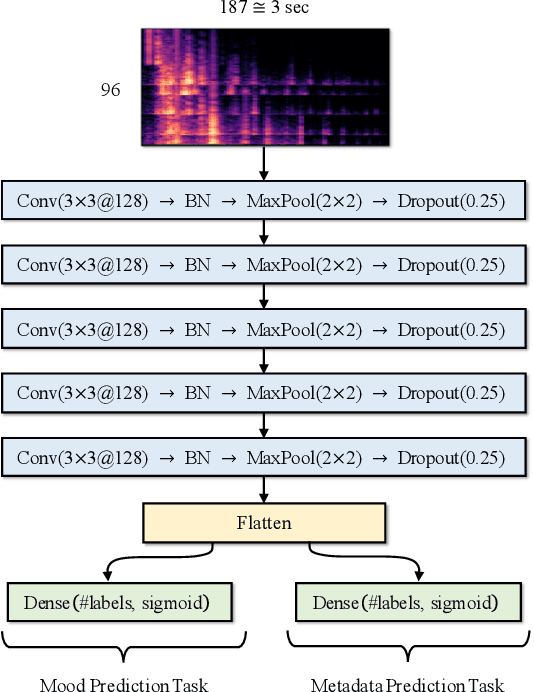Rajnish Kumar
Deep Muscle EMG construction using A Physics-Integrated Deep Learning approach
Mar 07, 2025Abstract:Electromyography (EMG)--based computational musculoskeletal modeling is a non-invasive method for studying musculotendon function, human movement, and neuromuscular control, providing estimates of internal variables like muscle forces and joint torques. However, EMG signals from deeper muscles are often challenging to measure by placing the surface EMG electrodes and unfeasible to measure directly using invasive methods. The restriction to the access of EMG data from deeper muscles poses a considerable obstacle to the broad adoption of EMG-driven modeling techniques. A strategic alternative is to use an estimation algorithm to approximate the missing EMG signals from deeper muscle. A similar strategy is used in physics-informed deep learning, where the features of physical systems are learned without labeled data. In this work, we propose a hybrid deep learning algorithm, namely the neural musculoskeletal model (NMM), that integrates physics-informed and data-driven deep learning to approximate the EMG signals from the deeper muscles. While data-driven modeling is used to predict the missing EMG signals, physics-based modeling engraves the subject-specific information into the predictions. Experimental verifications on five test subjects are carried out to investigate the performance of the proposed hybrid framework. The proposed NMM is validated against the joint torque computed from 'OpenSim' software. The predicted deep EMG signals are also compared against the state-of-the-art muscle synergy extrapolation (MSE) approach, where the proposed NMM completely outperforms the existing MSE framework by a significant margin.
sEMG-Driven Physics-Informed Gated Recurrent Networks for Modeling Upper Limb Multi-Joint Movement Dynamics
Aug 29, 2024Abstract:Exoskeletons and rehabilitation systems offer great potential for enhancing human strength and recovery through advanced human-machine interfaces (HMIs) that adapt to movement dynamics. However, the real-time application of physics-informed neural networks (PINNs) is limited by their reliance on fixed input lengths and surrogate models. This study introduces a novel physics-informed Gated Recurrent Network (PiGRN) designed to predict multi-joint torques using surface electromyography (sEMG) data. The PiGRN model employs a Gated Recurrent Unit (GRU) to convert time-series sEMG inputs into multi-joint kinematics and external loads, which are then integrated into an equation of motion to ensure consistency with physical laws. Experimental validation with sEMG data from five participants performing elbow flexion-extension tasks showed that the PiGRN model accurately predicted joint torques for 10 unfamiliar movements, with RMSE values between 4.02\% and 11.40\% and correlation coefficients ranging from 0.87 to 0.98. These findings highlight the PiGRN's potential for real-time exoskeleton and rehabilitation applications. Future research will explore more diverse datasets, improve musculoskeletal models, and investigate unsupervised learning methods.
Multi-task Learning with Metadata for Music Mood Classification
Oct 10, 2021

Abstract:Mood recognition is an important problem in music informatics and has key applications in music discovery and recommendation. These applications have become even more relevant with the rise of music streaming. Our work investigates the research question of whether we can leverage audio metadata such as artist and year, which is readily available, to improve the performance of mood classification models. To this end, we propose a multi-task learning approach in which a shared model is simultaneously trained for mood and metadata prediction tasks with the goal to learn richer representations. Experimentally, we demonstrate that applying our technique on the existing state-of-the-art convolutional neural networks for mood classification improves their performances consistently. We conduct experiments on multiple datasets and report that our approach can lead to improvements in the average precision metric by up to 8.7 points.
 Add to Chrome
Add to Chrome Add to Firefox
Add to Firefox Add to Edge
Add to Edge